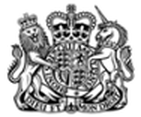HEALTH AND SAFETY AT WORK 1974
The Health and Safety at Work Act 1974 is intended to provide for the health and safety of all employees, as well as the self-employed and the public. However, this Act does not cover domestic workers in private employment. The regulations apply to work activities and to specific hazard areas in any industry.
The objectives of the Act are:
- To secure the health, safety and welfare of all people at work
- To reduce risks at work - ideally to zero
- To protect others from the risks arising from workplace activities
- Those at risk receive particular and appropriate protection
- To control the obtaining, keeping and use of explosives or highly inflammable substances
- Standards are improved as a core management task
- Standards conform across the EU and across all sectors, size and location of employment
Ignoring a statutory notice is a serious matter. The person concerned can be prosecuted and fined.
Adequate warnings of risk, as well as clear and visible sign-posting, is important. Defective lifts, slippery floors, broken windows and loose handles on doors should carry warning notices. Viable options must also be provided - requiring people to jump over holes in floors, or to climb a steep slope because steps are broken, would inevitably create new risks.
Adequate warnings of risk, as well as clear and visible sign-posting, is important. Defective lifts, slippery floors, broken windows and loose handles on doors should carry warning notices. Viable options must also be provided - requiring people to jump over holes in floors, or to climb a steep slope because steps are broken, would inevitably create new risks.
SAFETY SIGNS should always:
- Clearly identify the hazard
- Make plain how to avoid or minimise risk
- Allow for the characteristics of the group of people affected - i.e: age, language, etc.
The law takes the view that putting up notices doe not relieve a responsibility. It merely indicates that some steps have to be taken.
It is important to note that signs are colour coded:
It is important to note that signs are colour coded:
|
YELLOW
_____________________ RED _____________________ BLUE _____________________ GREEN _____________________ |
HAZARD
____________________________________________ PROHIBITED ____________________________________________ RECOMMENDATION TO BE SAFE - ie: WEAR HARD HAT ____________________________________________ ESCAPE/SAFETY PROCEDURES - eg: FOR FIRE ____________________________________________ |
|
Acknowledgement:
Tutor: Peter Perry These notes are an accumulation of those written by myself - or obtained from the College during the course.
This is not a commercial site. |
Polly Healy - Course Work : 2000
SOUTH THAMES COLLEGE, LONDON, SW18 2PP ______________________________________________________ Copyright: THE SMOOTH GUIDE TO PHOTOGRAPHY - How to get started ... [email protected] _____________________________________________________ See other Smooth Guide sites: www.animalsandenglish.com www.englishlanguagetips.com www.smoothguide-mahjong.com www.smoothguide-internetfundamentals.com www.smoothguide-kenyacoast.com www.healyshandyhouseholdhints.com www.smoothguide-sunbury.com |
